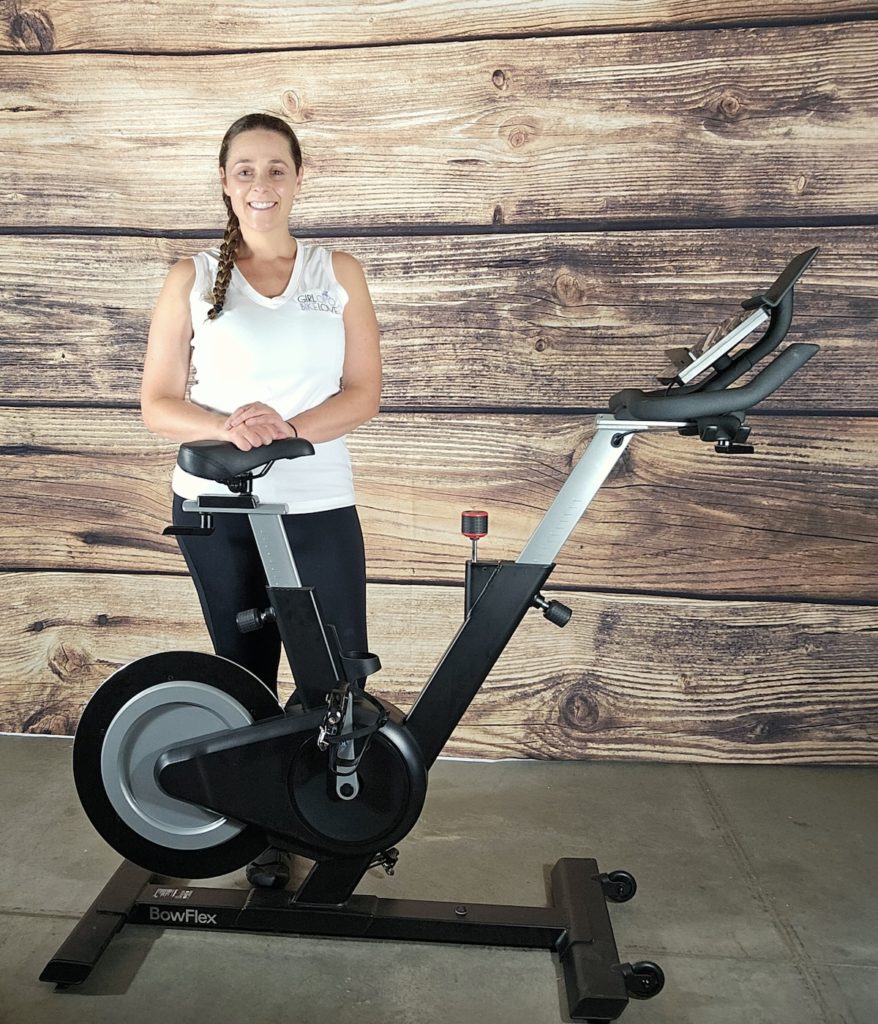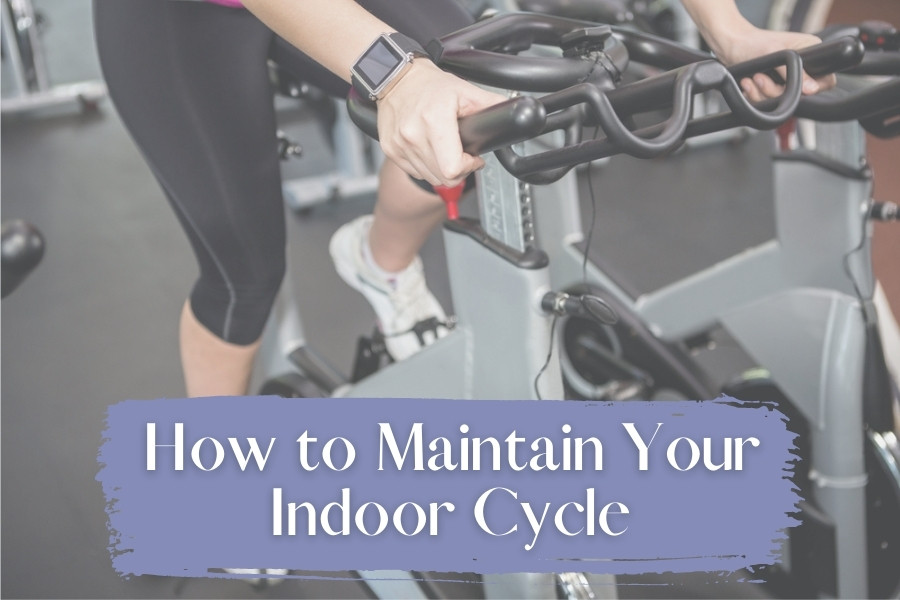Now that you have committed to riding at home and have purchased your bike, your job is only beginning. Regular maintenance is needed to keep your new bike working at its best. Regular upkeep of your bike may feel daunting, but don’t worry, the team at IndoorCyclingLove is here to lead the way.
If you have a direct-drive trainer instead of a bike, you can read our guide on how to maintain a bike trainer.
Before we break down how often to check your bike, we need to understand what features your bike includes.

Types of Resistance Systems
There are two different types of resistance systems that your bike could include. It is essential to understand which one your bike has to take care of it properly. The resistance system options include friction or magnetic.
Determining Your Drive System
Some indoor cycling models include a chain drive, while others offer a belt system like your regular outdoor bike. These different drive systems require diverse maintenance plans discussed in further detail below.
Maintenance Schedule
Like any quality machine, it is important to service your indoor cycling bike regularly to keep your bike at its best. Check out our daily, weekly, and monthly maintenance recommendations below.
Potential Tools Needed
Daily Tasks
1. Clean
After EVERY ride, you need to clean your bike. Sweat can cause rust and erosion of the frame. Remember to never spray the cleaner directly onto your bike, but spray it on a soft towel. A mild spray cleanser works, or even using a Clorox wipe. Just remember you do not want to clean the bike with anything abrasive. Cleaning the bike includes more than just the handlebars and saddle, but it is vital to clean the chain or belt guard in addition to the handlebar and seat posts.
Tip: Lift the handlebars and seats to the highest level possible before cleaning the posts. This position will also allow more airflow to eliminate any remaining moisture.
Katie Pierson, Spinning Instructor
2. Remove Resistance
Always take off all the resistance after your ride. Not removing the resistance can mess with the bike’s calibration.
Weekly Tasks
1. Tighten Crank Arms & Pedals
As you continue to ride your bike over time, the crank arms and pedals will require tightening. Note that the pedals are always tightened by turning towards the bike’s front, while the crank arms follow the regular tighten to the right and loosen to the left.
2. Check the Feet
The stabilizers located on the feet of the cycles should be checked weekly to keep your ride stable.
3. Bottom Brackets
Some play in the pedals is needed, but it can become too much of a good thing. Tightening the brackets will help keep your cleat in a better position while also helping to decrease the possibility of stripping the bracket screws.
Monthly Tasks
Once a month, you should look over the bike for any new sounds or vibrations. Using a cycle that includes friction resistance, a silicon-based lubricant will need to be applied to the flywheel and brake pads. You will also want to lubricate your knobs on the seat and handlebar posts during this checkup. If riding on a chain drive system, the chain should be lubricated and checked to see if it requires any tightening. Although it might need to be done every month, it is a good idea to wipe down your belt drive with a damp cloth regularly.
Tip: Although WD-40 is a lubricant, it can be abrasive, so we do not recommend using it on your bike.
Katie Pierson, Spinning Instructor
Other Maintenance Considerations
Friction Resistance Systems
Based on usage, the wool pads will need to be replaced approximately every 6-12 months. So if you need to turn the resistance knob more for the same resistance as in the past, then you know that it is time to change the pads out.
Magnetic Resistance Systems
If you are experiencing a loss in resistance, this can be due to one or more magnets slipping from their position. Resistance can be restored by securing the slipped magnet back into place.
Belt Drives
Although belt drives do not require much maintenance, the belt can loosen and begin to slip. The belt will need to be replaced. If you do not feel comfortable making this repair, a bike technician can do this for you.
The Bottom Line
If you maintain your bike correctly, you can enjoy a bike that continues to feel brand-new for years to come. We recommend that you have a professional examine your bike once a year to ensure that everything is working correctly. This will increase the longevity of your bike. Happy riding!


Hi Katie, thanks for the useful info. I have a Bowflex c6 and when I get into higher resistance I get squeaks. Haven’t been able to pinpoint where they come from yet. I’ve used Silicon lube on the handlebar and seat posts, but not sure where else I need to check. Any ideas is greatly appreciated.
Thanks again,
Omar.
Hi Omar!
I would recommend that you also check a few other places; The crank arms can cause squeaking, which can require tightening or additional lubrication; flywheel bearings can get dusty and grimy and require cleaning or need additional lubrication; and also, if the belt drive is becoming worn or loose, it can cause squeaking.
Finally, you can also ask your question in a C6 community like https://www.reddit.com/r/SchwinnIC4_BowflexC6/ in case other people have the same issue.
Katie P.
Hi Katie, thanks for the useful info. I have a Bowflex c6 and when I get into higher resistance I get squeaks. Haven’t been able to pinpoint where they come from yet. I’ve used Silicon lube on the handlebar and seat posts, but not sure where else I need to check. Any ideas is greatly appreciated.
Thanks again,
Omar.
Hi Omar!
I would recommend that you also check a few other places; The crank arms can cause squeaking, which can require tightening or additional lubrication; flywheel bearings can get dusty and grimy and require cleaning or need additional lubrication; and also, if the belt drive is becoming worn or loose, it can cause squeaking.
Finally, you can also ask your question in a C6 community like https://www.reddit.com/r/SchwinnIC4_BowflexC6/ in case other people have the same issue.
Katie P.
Hi Katie! Great article, thank you! Is there anything special to do with the belt itself…besides ensuring proper tension? I recently got a used Tomahawk Matrix with a belt drive. I am very adept at bicycle maintenance and I’m just checking over everything on the spin bike. All is in order, just wanted to check if you suggest anything about the belt itself.
Hi Matt!
Unless you feel any slipping or the belt is making noise, nothing else is needed for the belt now. It sounds like you are doing a great job with maintenance, and it will help prolong the life of his bike.
Hi Katie! Great article, thank you! Is there anything special to do with the belt itself…besides ensuring proper tension? I recently got a used Tomahawk Matrix with a belt drive. I am very adept at bicycle maintenance and I’m just checking over everything on the spin bike. All is in order, just wanted to check if you suggest anything about the belt itself.
Hi Matt!
Unless you feel any slipping or the belt is making noise, nothing else is needed for the belt now. It sounds like you are doing a great job with maintenance, and it will help prolong the life of his bike.